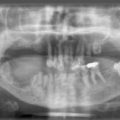21] and in neuroblastoma in 1984 [
Before treatment, any drugs known to interfere with the uptake and/or retention of 131I m-IBG must be withdrawn (EANM). A thyroid blocking agent must be prescribed, starting before and continuing for an extended period after treatment, to protect the gland from taking up any free 131I with the subsequent risk of developing hypothyroidism. The dose limiting toxicity is hematological and monitoring of blood counts is essential after treatment.
Iodine-123 m-IBG is available for imaging such tumours using a gamma camera and, as part of the preparation for treatment, patients should undergo m-IBG scintigraphy (either 123I or 131I) to confirm uptake in all known tumour sites. Treatment may be prescribed either using a set activity, using an activity per kilogram or by using the results of pretreatment dosimetric measurements with a tracer dose. In this last case, an activity may be prescribed for treatment using a predetermined criterion. For instance, a limit of 2 Gy to the total body has been used in the treatment of children with neuroblastoma [
Typical administered activities are between 3.5 GBq and 7 G Bq and patients require admission to an isolation unit for a period of time determined by national regulations. Very careful arrangements must be made for the treatment and nursing of children, who are often under 3 years of age.
The effective dose to a 70 kg adult is 0.013 mSv/MBq, or 46 mSv for 3.5 GBq. The radiation dose to the tumour varies widely.
Stay updated, free articles. Join our Telegram channel

Full access? Get Clinical Tree




